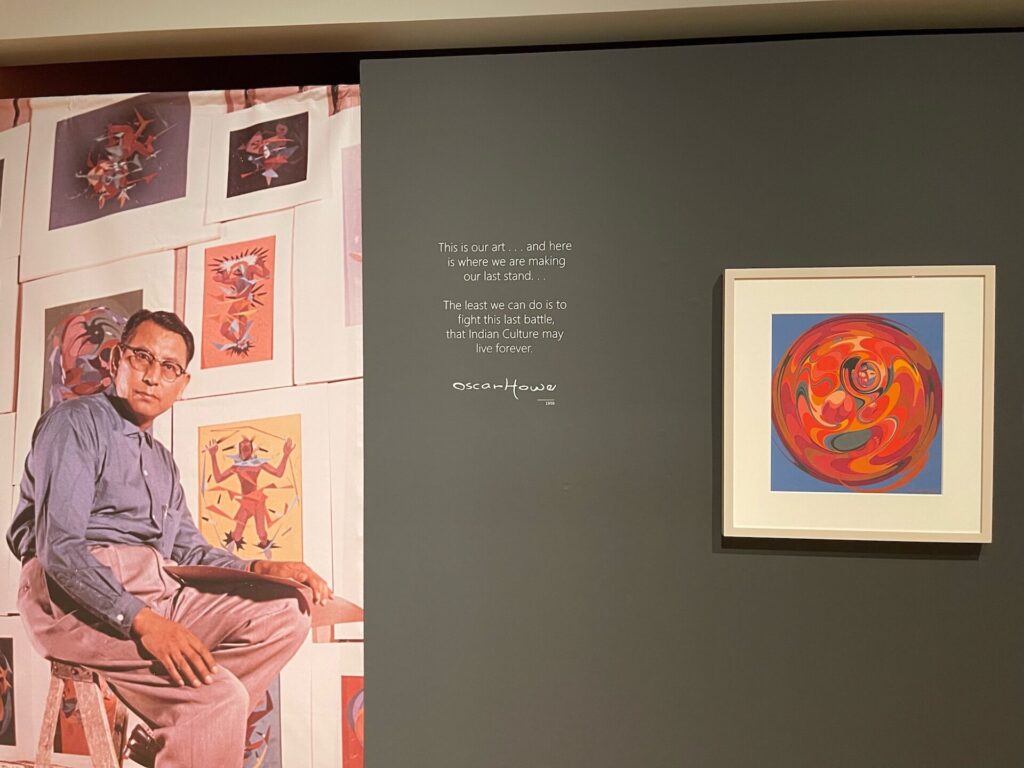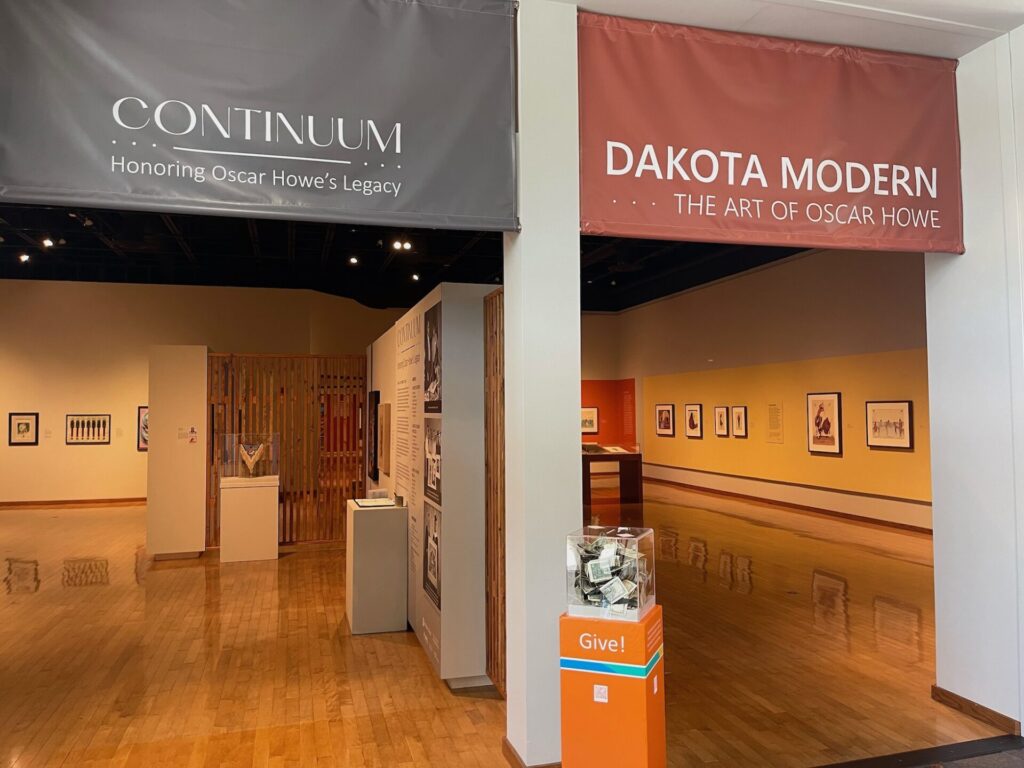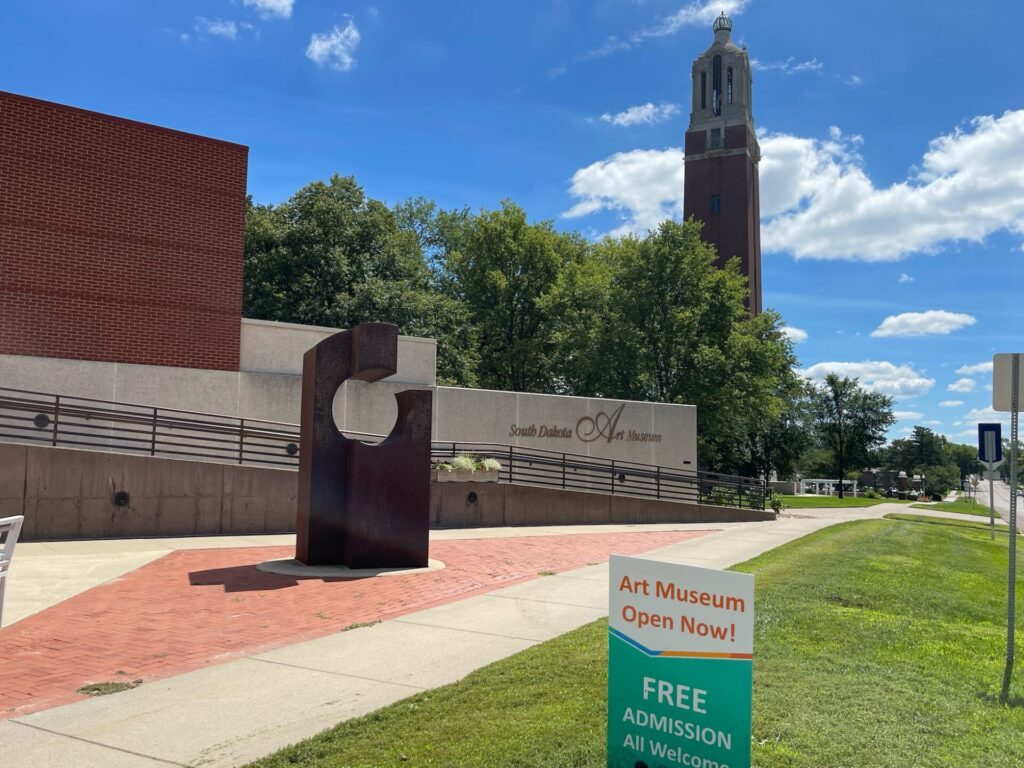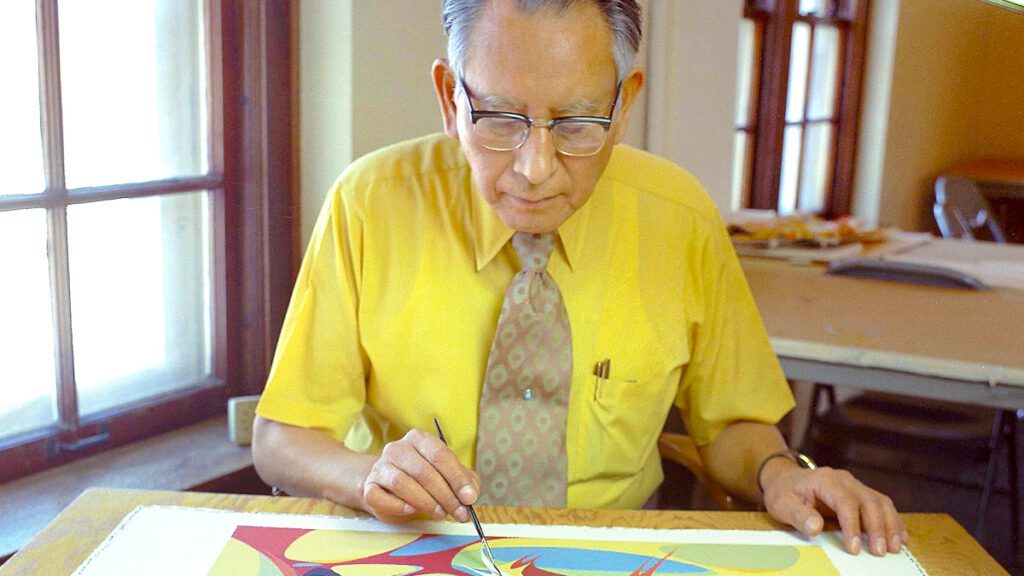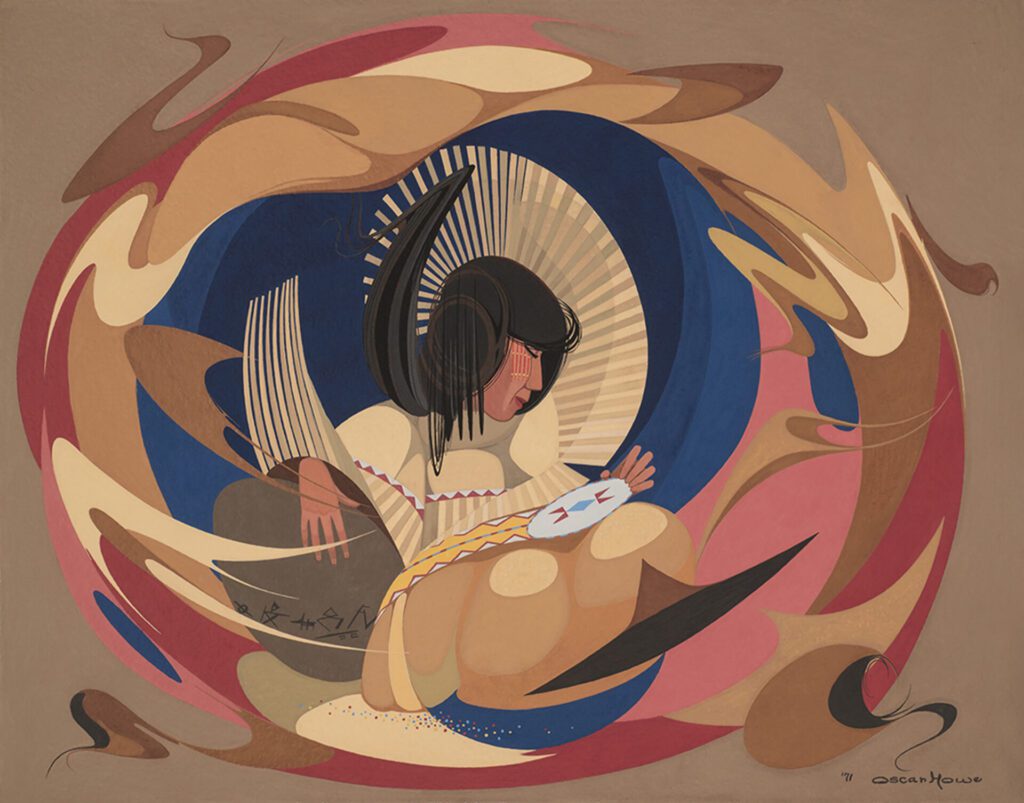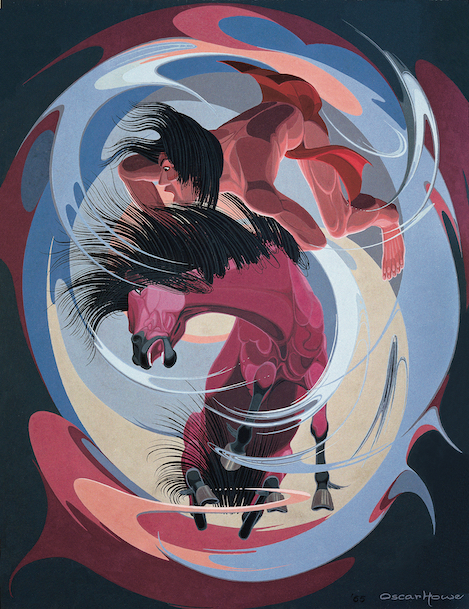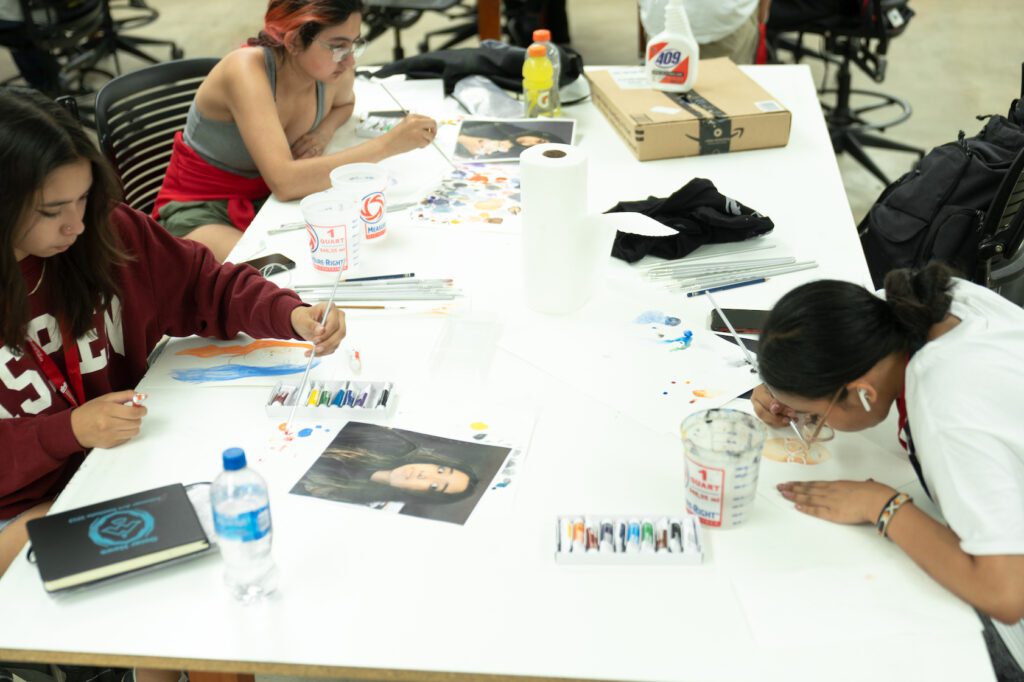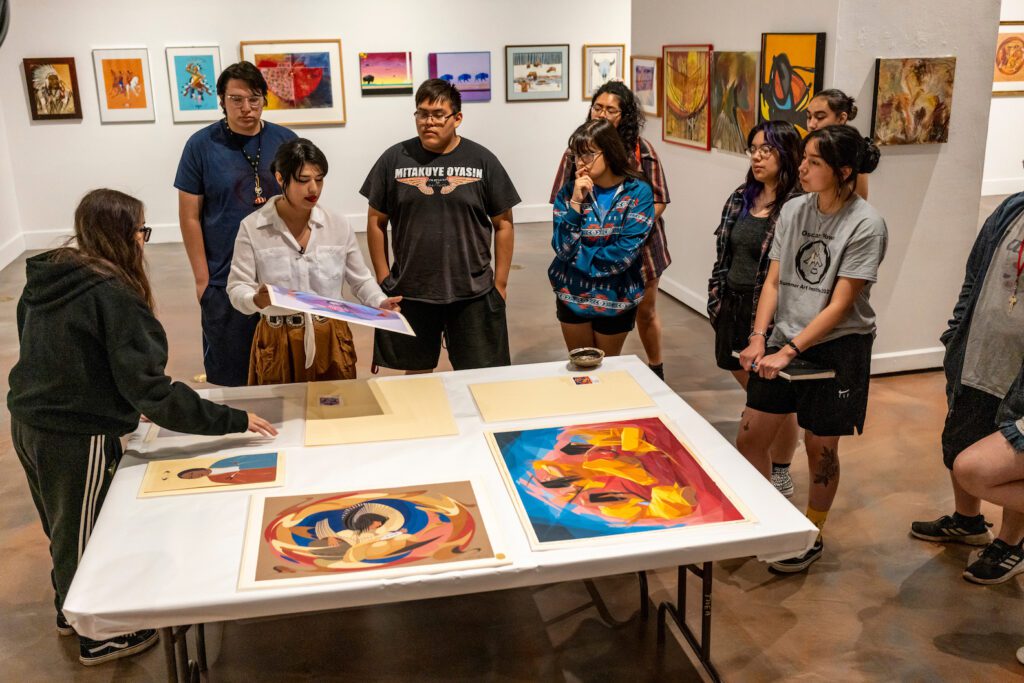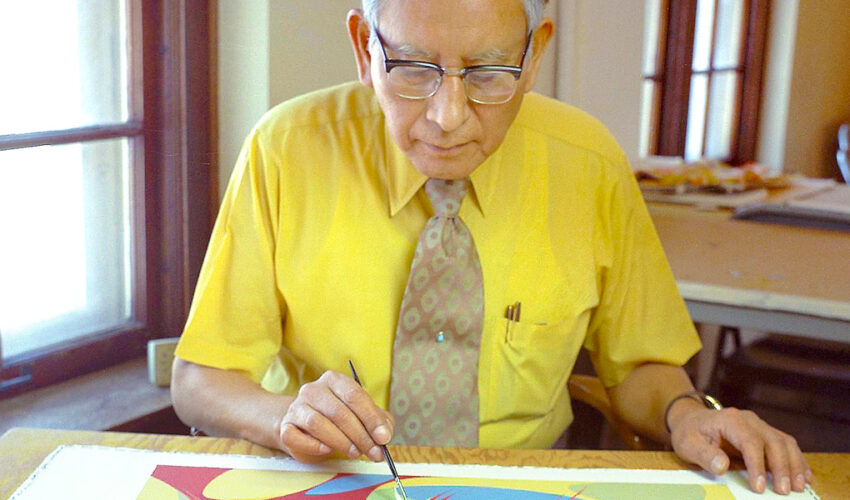Exhibition honors art, legacy of Oscar Howe
Aug. 23, 2023
This paid piece is sponsored by the University of South Dakota.
The University of South Dakota honors Oscar Howe’s legacy as an artist and mentor through a traveling exhibition being seen nationwide.
“Howe’s legacy reminds us of the tremendous power of inspiration and perseverance,” said Bruce Kelley, dean of the College of Fine Arts. “As his own artistry evolved, Howe challenged the notion that he had to fit a certain mold. He spent most of his life in small communities in South Dakota and yet proved to be a global force. His legacy lives on in both his art and his teachings, which continue to impact generations of students and artists.”
“Dakota Modern: The Art of Oscar Howe” takes viewers on a journey of more than 40 years of Oscar Howe’s career and development, from early conventional work he created while in high school in the 1930s through the emergence of Howe’s innovative and abstract approach to painting in the 1950s and 1960s.
This exhibition, developed in collaboration with the Portland Art Museum and curated by Kathleen Ash-Milby, curator of Native American art at PAM, introduces new generations to Howe, who is considered to be one of the 20th century’s most innovative Native American painters.
“Dakota Modern: The Art of Oscar Howe” has been on display across the country – from Portland to the Smithsonian’s National Museum of the American Indian in the nation’s capital. Now, it has traveled to Howe’s home state of South Dakota and is on display at the South Dakota Art Museum in Brookings through Sept. 17.
To truly understand and appreciate the craft of a man who catalyzed a movement among Native artists to express their individuality rather than conforming to an established style, it is important to appreciate the culture and tradition of the artist who wielded the brush.
The history
Born in 1915 at Joe Creek on the Crow Creek Reservation, Howe would come to be a renowned artist whose work would be seen around the globe by the time he turned 18.
Howe attended the Pierre Indian School before returning home to learn from his grandmother Shell Face. While there, he spent hours drawing and painting, using anything he could get his hands on as tools for his craft. His grandmother would share the history of their people, telling stories and legends of the generations before them.
In 1933, Howe left the Plains for New Mexico and attended the Santa Fe Indian School, where he joined the art program established by Dorothy Dunn. Though he could have taken his talents anywhere, Howe chose to return to his roots in South Dakota upon graduating in 1938.
Around this time, he joined the South Dakota Works Progress Administration and completed mural projects in Mitchell and Mobridge.
In 1942, Howe was drafted into the Army and would return from his time abroad with his wife, Adelheid Hample. The couple had one child, Inge Dawn.
Howe earned his bachelor’s degree from Dakota Wesleyan University and later received his MFA from the University of Oklahoma. In 1957, after teaching at Pierre High School for three years, he became an artist-in-residence and professor of art at the University of South Dakota.
Howe dedicated 23 years of his career to USD. He retired as emeritus professor of art in 1980, leaving behind a legacy that would influence generations of students for decades to come.
The artist exhibited works in New York, London and Paris while he was a student in the 1930s and later was represented by more than 50 solo shows. He was named artist laureate of the Middle Border in 1954 and artist laureate of South Dakota in 1960. He was also the first recipient of the South Dakota Governor’s Award for Creative Achievement in 1973.
Rituals rooted in family
When Inge Dawn Howe Maresh was a child, she thought everyone’s dad painted at night after they watched the news.
She grew up watching her father set up an art studio in each home they lived in. Sometimes it was a dedicated corner of a room; other times he and his wife sacrificed a bedroom as a studio and slept in the living room — all so he could have space to create.
“My father was a wonderful father,” Howe Maresh said. “He was gentle and kind; he taught by example. He loved his family very much.”
According to Howe Maresh, the family’s routine was comfortable and well structured. Her father would come home promptly at 5 p.m. when her mother had dinner prepared and on the table. They would eat together as a family, sharing stories about their days before her father would move to the living room to watch the news. After the news, it was time to paint.
“In preparation for his next piece, my father would draw a sketch of the story he wanted to tell with his painting,” Howe Maresh reflected. “He would study his paper before establishing three ‘esthetic points’ (beauty points) and connect them with lines (symbols of truth). This process is called ‘owa’ and means writing with a point-to-point movement.”
Howe incorporated Native American symbols into his works, and every element of his pieces was layered with deep meaning and intentionality that paid homage to his Dakota heritage.
“Dance of Double Woman,” 1971, Oscar Howe, © Howe LLC
Howe Maresh described the care he took into each color he mixed by hand and remembered a bathtub full of Fabriano paper that she would help him soak in preparation for his next piece. Howe emulated the process of painting on skins and visually represented the oral history of his people.
“He wished to stay close to traditional Dakota Indian painting (on skins) called the painting of the truth,” Howe Maresh said. “I think his art fulfilled his hope to represent the best of Dakota culture, and he was able to capture the spirituality of his people in very powerful ways and introduce it to modern cultures.”
“Kaska” (Trial by Riding a Wild Horse), Oscar Howe, © Howe LLC
One summer, Howe Maresh took a workshop from her father and witnessed his teachings firsthand.
“I think he touched all his students with inspiration for setting goals in your life and feeding your creative spirit,” she said. “He certainly respected individuality and positivity in life. He believed it was everyone’s responsibility to make the world a better place by connecting with and respecting your own culture so you can expand your horizons to value and appreciate other cultures.”
Paving the way for Native artists
Howe paved a path for Native artists, giving them expressive permission to own their talents, embrace their history and break down barriers that fought to keep them contained.
As a teacher, father, husband and artist, Howe’s approach was calm and unapologetic. He never underestimated the power of community or the value of integrity.
“I try to faithfully and truthfully bring out the true meaning of the fine and good things of the past Sioux culture,” Howe said in his 1958 letter to the Philbrook Art Center. “It is my greatest hope that my paintings may serve to bring the best of Indian culture to the modern way of life.”
Howe created paintings that could be appreciated for their basic aesthetic appeal, but he challenged viewers to consider something far more meaningful — to feel the movement of a ceremonial sun dance, watch dancers transcend a traditional powwow and witness traditions that are honored to this day.
Howe wove deeply rooted tradition and ceremony into the sharp lines of modernism. He intentionally used both the positive and negative space on the page, creating magic in noncontextual landscapes. This timeless appeal to his art invites viewers to think beyond the image of a reservation on the plains of South Dakota and see Native people, culture and tradition across all timelines in all corners of the world.
Howe’s influence in artistry expanded far beyond the legacy of his paintings. In addition to teaching on USD’s campus and serving as a faculty adviser for the Wapaha Club – the USD Native Student Club founded in 1957 – Howe began to offer summer art classes to high school students in 1960.
Primarily dedicated to Native Americans, the classes offered by Howe created an opportunity for students to visit a college campus, learn from a successful Native artist and be exposed to an educational experience they otherwise might not have received. The students were provided with a sense of community and connection that expanded beyond the borders of where they grew up.
Through the stroke of a brush, Howe brought their history to life — teaching about the past while honoring the present. He introduced students to a new opportunity, encouraging them to pave their own path in the world.
Decades later, students who had the benefit of being taught by Howe would carry on this tradition through the Oscar Howe Summer Art Institute, or OHSAI.
Leaving a legacy
“For all of our pride in Oscar Howe as a South Dakotan, we must acknowledge that he belongs to the world.” – John A. Day
While his paintings have graced the walls of museums around the globe, Howe was not driven by fame; rather, the humble, generous artist was motivated to encourage and support the generations that would follow.
In 1991, Robert Penn, a former student of Howe’s who experienced firsthand a life-changing education from Howe, joined forces with John A. Day to restart the OHSAI in honor of the late artist.
In the early years of the institute, funding was scarce, and at times, the faculty who led the programming weren’t paid. Later, with the help of transformative grant dollars, the institute was able to not only attract incredibly talented artists as teachers and lecturers but also welcome students from beyond the region.
Like Penn, many students who have attended the institute have found success and fame as artists and have come back years later to pay it forward, acting as student counselors, teachers and lecturers.
“The importance of Oscar Howe’s influence on Native American artists and arts programing cannot be understated,” said Cory Knedler, chair of the UDS art department and director of the OHSAI.
“Without Howe’s influence on Bobby Penn, there would be no Oscar Howe Summer Art Institute. Penn was Howe’s protege and understood the importance of a strong mentor and providing transference of knowledge from one generation to the next. Without the institute, there would be countless artists that would not have had the opportunity to meet the mentors that changed their lives and encouraged them to pursue an art career. We continue to see this today as students who went through the early OHSAI are now back as instructors, continuing to transfer what they learned to the next generation of young artists.”

